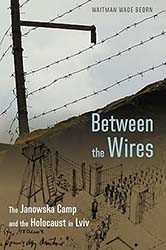Over a couple of days in September 1941, SS troopers, ordinary German soldiers, and Ukrainian collaborators drove more than 33,000 Kiev Jews into a ravine on the outskirts of the city called Babi Yar — in English, “Grandma’s Gully.” There, they were stripped, beaten, raped, machine-gunned, and, finally, buried in a vast trench.
One of the three bloodiest massacres of Jews during the Second World War, Babi Yar has become Jewish shorthand for the “Holocaust by bullets” that predated the opening of the first extermination camps in 1942. We know about Babi Yar because of Anatoli Kuznetsov, who survived the Nazi occupation of Kiev as a starving, terrorized teenager.
Kuznetsov’s novel, which he calls a “document” because it is based solely on eyewitness accounts and verifiable evidence, is not really a “Jewish” book. Kuznetzov, a non-Jewish Russian, focuses on the reduction of a great city and its citizens — Jewish, Russian, and Ukrainian — to a feral state as a result of monstrous Nazi and Soviet evil.
Once one reads Kuznetsov’s rendering of the massacre, which takes up a mere handful of pages in a long book, one cannot unsee it. The horror lies not so much in the event as a whole, but in the accumulation of seemingly random details. German soldiers, shivering in the September chill, brew coffee over an open fire as they wait to open fire on the next group of Jews. A Ukrainian policeman named Demidenko leans on his shovel, too exhausted by the day’s work to do more than throw a thin layer of dirt over the murdered Jews before wandering home. For days afterward, the ravine emits “ … strange submerged sounds, groaning, choking and sobbing … the whole mass of bodies kept moving.”
Babi Yar is an uncomfortable and highly transgressive work, and not just by Soviet standards. In recounting the lives of ordinary people in the midst of a war of annihilation, Kuznetsov forces us to confront the yawning moral ambiguity of conflict. Kiev was full of collaborators like Demidenko, but for many Ukrainians, the arrival of the Nazis seemed like a reprieve from the repression and starvation caused by Soviet rule. “There were no more collective farms,” Kuznetsov writes, “ … no more of the officials and hangers-on who had made an easy living at the expense of the peasants … even the old folk could not recall it ever happening that the village of Litvinovka had eaten its fill.”
It didn’t last, of course. Embedding a succession of newspaper headlines in the text, Kuznetsov chronicles the steady increase of Nazi cruelty, from hostage-takings and reprisal killings to the forced deportation of slave laborers to the Reich. “Compared with Babi Yar,” he observes, “any Soviet camp was a health resort.”
But still, the ambiguity remains. While hitching a ride with a German soldier driving a horse-and-wagon, Kuznetsov is touched when the man puts an arm around his shoulder to prevent him falling off as they round a bend, “just like a father caring for his son.” Kuznetsov wonders: Could this man be one of the coffee drinkers at Babi Yar? If so, the implication seems to be, what precisely is the moral distance that separates any one of us from pure evil?
It is worth noting that after the war, the Soviet Union refused to memorialize the murdered Jews of Babi Yar as anything other than Soviet citizens. For that acknowledgement, and for a proper monument to either Babi Yar or Kuznetsov, we had to wait for an independent Ukraine.
Babi Yar was first published in 1966 in a series of heavily censored Soviet magazine articles. Three years later, Kuznetsov defected to the United Kingdom. Shortly thereafter, an English edition of the book was published, with all the censored material restored, along with additional text added by Kuznetsov himself. In this edition, the censored text and Kuznetsov’s editorializing are shown in different typefaces. The effect is Faulknerian, almost surreal. It disorients our sense of time as we are made privy to the author’s voice underlying the text.
Rereleased last year to mark the anniversary of Russia’s invasion of Ukraine, with a new introduction by Russian American journalist Masha Gessen, Babi Yar remains one of the most challenging books to emerge from the Second World War. Kuznetsov is a profound moral voice, forcing us to confront not only war, but the vast existential emptiness that lies at its heart. “We must not forget those cries,” he concludes. “They are not yet history. They are the present day.”
Angus Smith is a retired Canadian intelligence official, writer and Jewish educator who lives in rural Nova Scotia.





